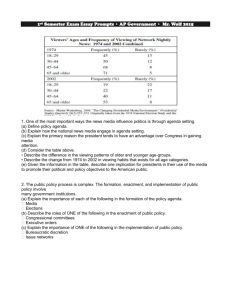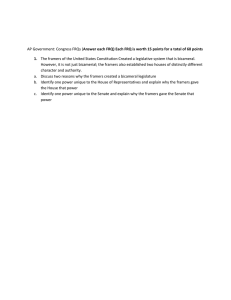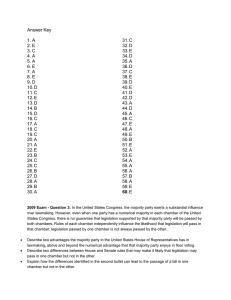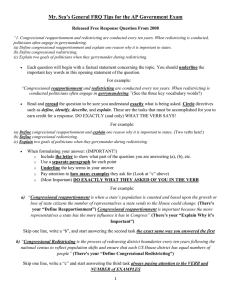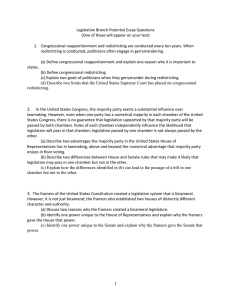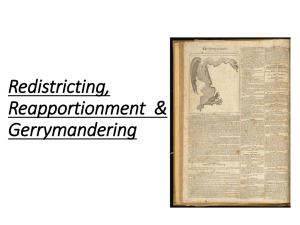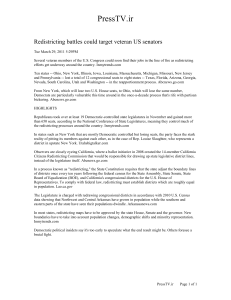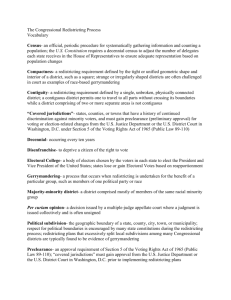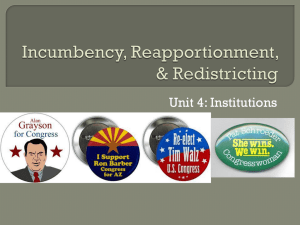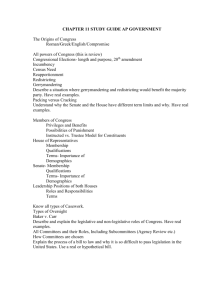Legislative Branch Potential Free Response Questions 1. (2006) In
advertisement
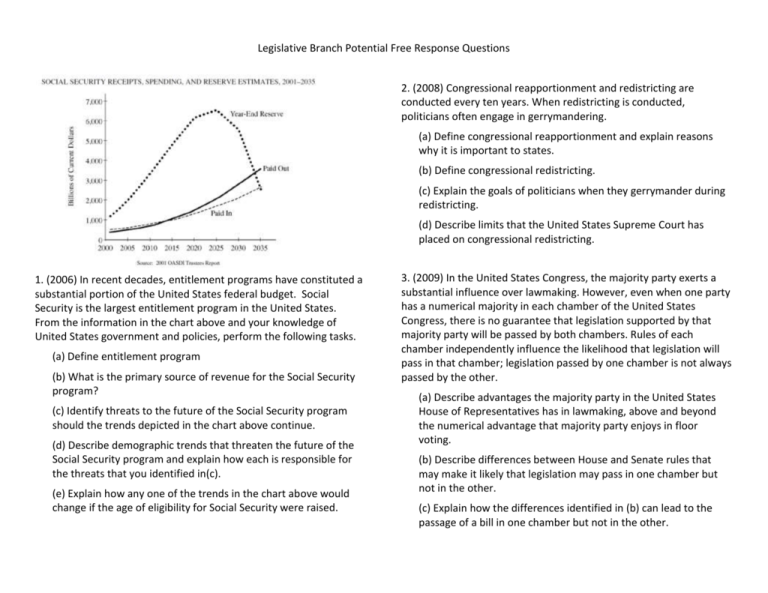
Legislative Branch Potential Free Response Questions 2. (2008) Congressional reapportionment and redistricting are conducted every ten years. When redistricting is conducted, politicians often engage in gerrymandering. (a) Define congressional reapportionment and explain reasons why it is important to states. (b) Define congressional redistricting. (c) Explain the goals of politicians when they gerrymander during redistricting. (d) Describe limits that the United States Supreme Court has placed on congressional redistricting. 1. (2006) In recent decades, entitlement programs have constituted a substantial portion of the United States federal budget. Social Security is the largest entitlement program in the United States. From the information in the chart above and your knowledge of United States government and policies, perform the following tasks. (a) Define entitlement program (b) What is the primary source of revenue for the Social Security program? (c) Identify threats to the future of the Social Security program should the trends depicted in the chart above continue. (d) Describe demographic trends that threaten the future of the Social Security program and explain how each is responsible for the threats that you identified in(c). (e) Explain how any one of the trends in the chart above would change if the age of eligibility for Social Security were raised. 3. (2009) In the United States Congress, the majority party exerts a substantial influence over lawmaking. However, even when one party has a numerical majority in each chamber of the United States Congress, there is no guarantee that legislation supported by that majority party will be passed by both chambers. Rules of each chamber independently influence the likelihood that legislation will pass in that chamber; legislation passed by one chamber is not always passed by the other. (a) Describe advantages the majority party in the United States House of Representatives has in lawmaking, above and beyond the numerical advantage that majority party enjoys in floor voting. (b) Describe differences between House and Senate rules that may make it likely that legislation may pass in one chamber but not in the other. (c) Explain how the differences identified in (b) can lead to the passage of a bill in one chamber but not in the other.

